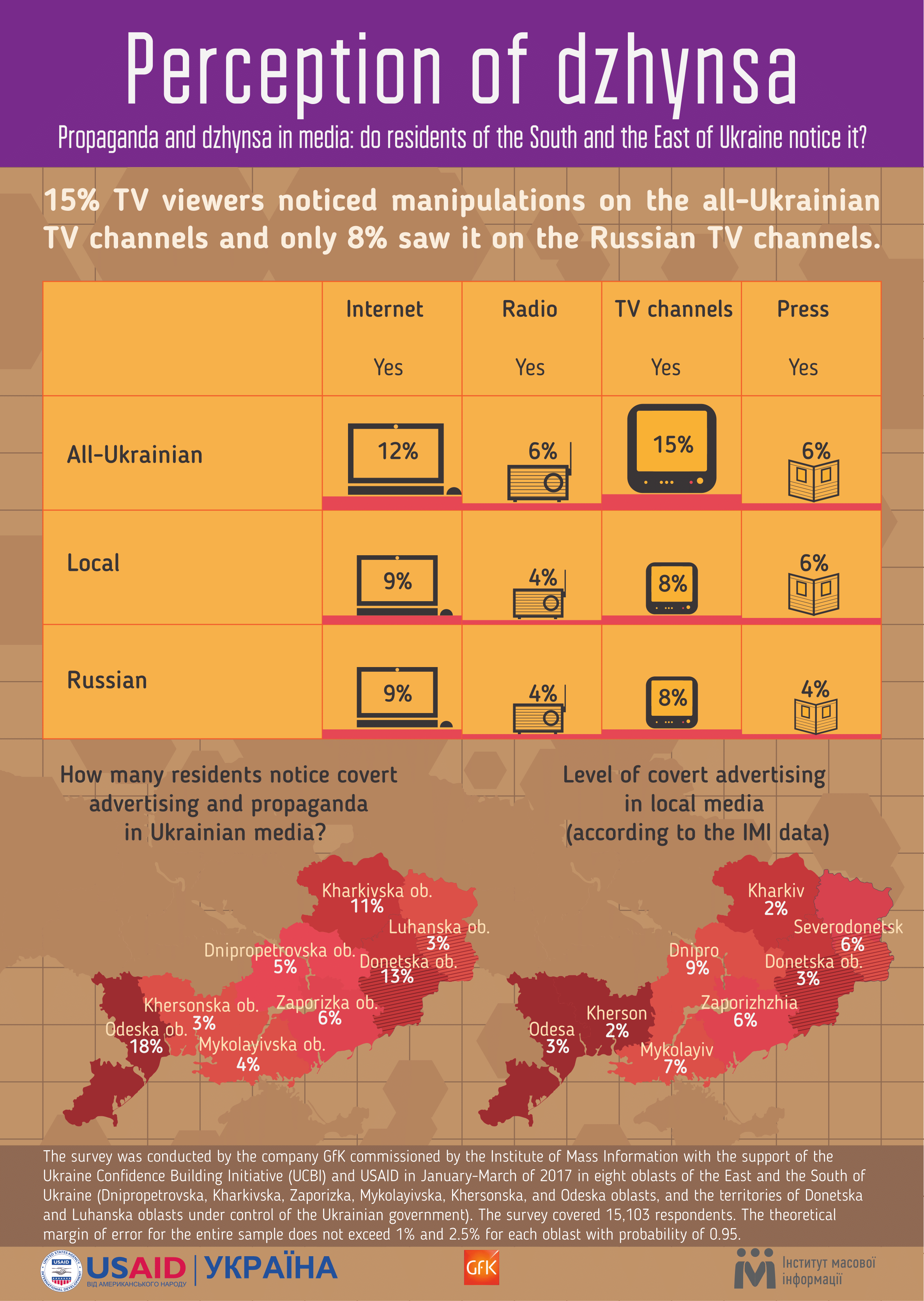15% TV audience of residents of the South and the East of Ukraine noticed covert advertising, propaganda or biased materials on the all-Ukrainian TV channels, and 12% — on the all-Ukrainian informational websites.
These are the results of the survey of residents of eight oblasts of the South and the East of Ukraine, which was conducted in the beginning of 2017 by the company GfK commissioned by the Institute of Mass Information with the support of the Ukraine Confidence Building Initiative (UCBI) and USAID.
At the same time, 9% noticed covert advertising on local and Russian informational websites, and 8% — on local and Russian TV channels.
On average, according to estimates of the surveyed, incidence of «dzhynsa» somewhat decreased compared to the end of 2015, when the local elections were held. Then, 18% of the surveyed noticed covert advertising and manipulations on central TV channels, and 16% – on the all-Ukrainian informational websites.
Residents of Odeska and Luhanska oblasts are most critical towards dzhynsa and propaganda in all kinds of Ukrainian media (18% and 13%, respectively, noticed it), and residents of Khersonska oblast and Donetska oblast were least observant of it (only 3% of the surveyed noticed it).
What is noteworthy, estimates of residents of the South and the East of how often covertly commissioned materials appear in local media outlets of different kinds, in general, concur with the results of the monitoring conducted by IMI experts. Actually, according to IMI’s data, covertly commissioned materials were identified most often in local printed media outlets (6%), and on informational websites and on television (4% in each category).
Note:
The survey was conducted by the company GfK commissioned by the Institute of Mass Information with the support of the Ukraine Confidence Building Initiative (UCBI) and USAID in January-March of 2017 in eight oblasts of the East and the South of Ukraine (Dnipropetrovska, Kharkivska, Zaporizka, Mykolayivska, Khersonska and Odeska oblasts, the territories of Donetska and Luhanska oblasts under control of the Ukrainian government). The survey covered 15,103 respondents. The theoretical margin of error for the entire sample does not exceed 1% and 2.5% for each oblast with probability of 0.95. The first wave of the research was conducted in November 2015 – January 2016 and covered 13, 830 respondents in six oblasts of the East and the South of Ukraine (all listed above, except for Khersonska and Mykolayivska oblasts).

